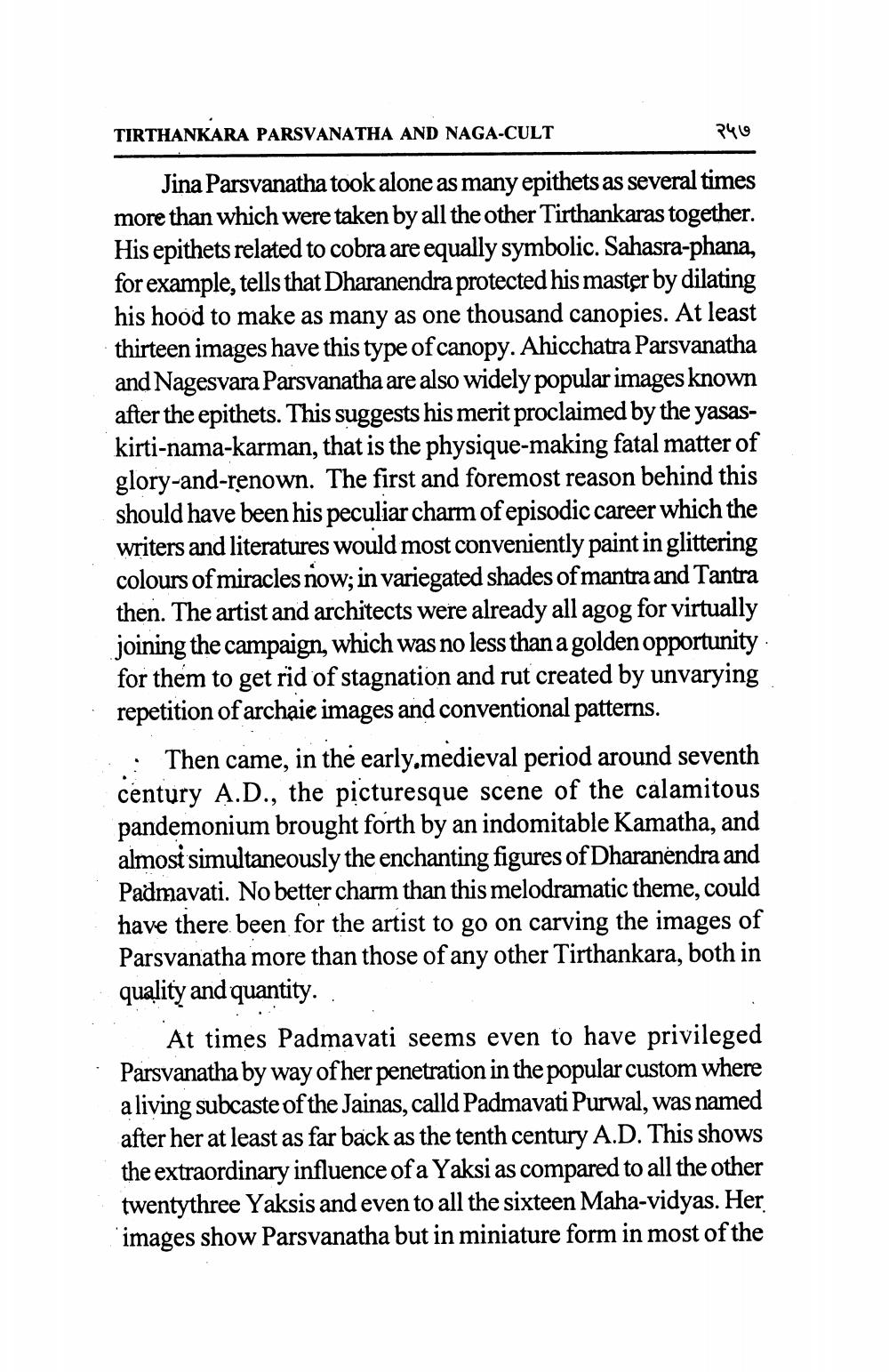________________
TIRTHANKARA PARSVANATHA AND NAGA-CULT
२५७
Jina Parsvanatha took alone as many epithets as several times more than which were taken by all the other Tirthankaras together. His epithets related to cobra are equally symbolic. Sahasra-phana, for example, tells that Dharanendra protected his master by dilating his hood to make as many as one thousand canopies. At least thirteen images have this type of canopy. Ahicchatra Parsvanatha and Nagesvara Parsvanatha are also widely popular images known after the epithets. This suggests his merit proclaimed by the yasaskirti-nama-karman, that is the physique-making fatal matter of glory-and-renown. The first and foremost reason behind this should have been his peculiar charm of episodic career which the writers and literatures would most conveniently paint in glittering colours of miracles now; in variegated shades of mantra and Tantra then. The artist and architects were already all agog for virtually joining the campaign, which was no less than a golden opportunity for them to get rid of stagnation and rut created by unvarying repetition of archaie images and conventional patterns.
Then came, in the early.medieval period around seventh century A.D., the picturesque scene of the calamitous pandemonium brought forth by an indomitable Kamatha, and almost simultaneously the enchanting figures of Dharanendra and Padmavati. No better charm than this melodramatic theme, could have there been for the artist to go on carving the images of Parsvanatha more than those of any other Tirthankara, both in quality and quantity.
At times Padmavati seems even to have privileged Parsvanatha by way of her penetration in the popular custom where a living subcaste of the Jainas, calld Padmavati Purwal, was named after her at least as far back as the tenth century A.D. This shows the extraordinary influence of a Yaksi as compared to all the other twentythree Yaksis and even to all the sixteen Maha-vidyas. Her images show Parsvanatha but in miniature form in most of the




